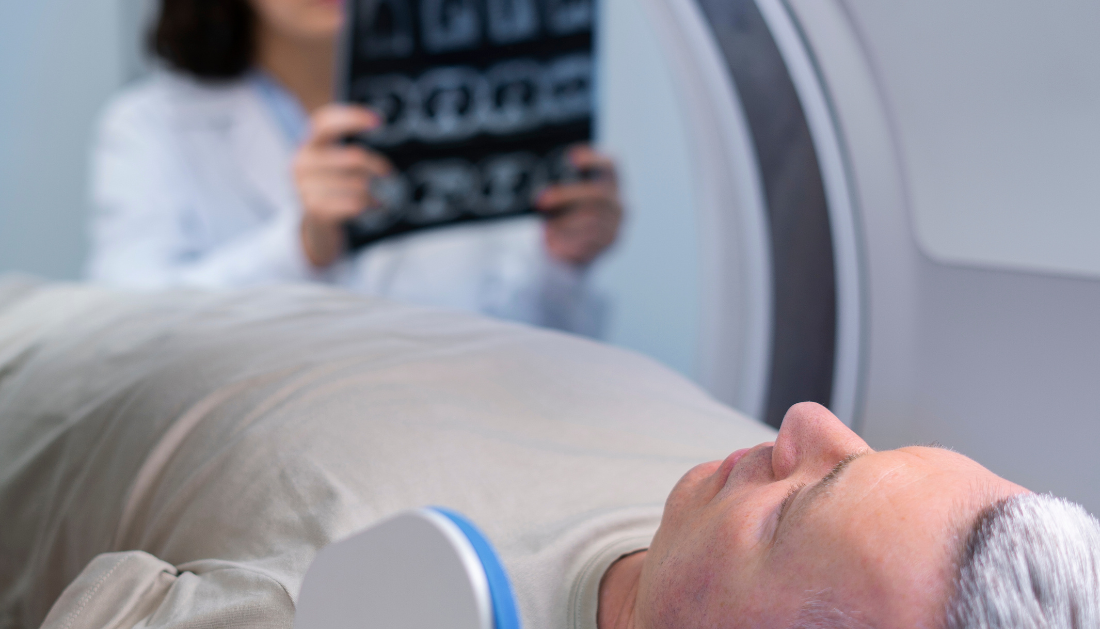

A significant trial used MRI neuronavigated Transcranial Magnetic Simulation (TMS) to aid patients with severe depression, and symptoms were reduced for at least six months.
The trial’s findings revealed that, on average, individuals saw significant improvements in the severity of their depression, anxiety, and thinking following MRI TMS. Participants reported improved function and quality of life after 26 weeks of TMS.
This was a significant rise over earlier reported improvements that lasted only one to three months.
The BRIGhTMIND randomised controlled trial was led by University of Nottingham researchers. The Medical Research Council and the National Institute for Health and Care Research financed it as part of their Efficacy and Mechanism Evaluation project.
It involved five centres in England:
Cities include Nottingham, Camden, Islington, and Newcastle.
Northampton and Oldham offer TMS, an outpatient treatment that involves delivering intense magnetic pulses to the left side of the head near the temporal portion of the scalp.
The individual is conscious and attends 20 sessions over a four- to six-week period.
The technique has been utilized since the 1980s to treat severe depression. However, by focusing on the specific part of the brain where stimulation is likely to be beneficial, we now have evidence for a more long-term effect from this treatment.
Treatment-resistant depression
Major depression is the largest cause of disability lost years worldwide (World Health Organization, 2017), and depression-related suicide is the top cause of death among those aged 15 to 49.
Two-thirds of persons with depression benefit from antidepressants and therapy administered as first or second-line treatments, whereas the other one-third suffer from treatment-resistant depression. This is described as a failure to respond to two rounds of antidepressants.
Extending the treatment period
The trial aimed to see whether the benefits of TMS could be extended for at least six months. This would imply that people with TRD who respond to treatment may only need one to two rounds of treatment per year to be relatively healthy and free of depressive symptoms.
The research, which is the first of its kind in the world to look at results after six months, suggests that this might be accomplished by combining functional MRI with TMS to pinpoint the exact location of the brain to target. MRI is not commonly utilized to give this treatment.
To deliver the TMS, the scientists used neuronavigation, a computer-controlled tracking system that uses light. It is a method of accurately identifying the location of stimulation such that the same area is treated throughout all 20 therapy sessions.
Personalizing the site of stimulation
Richard Morriss, Professor of Psychiatry at the School of Medicine and Director of the Centre for Mood Disorders at the Institute of Mental Health at the University of Nottingham, stated:
Ideally, participants who come for a TMS session should sit in the same spot, but this is unlikely to happen. This method employs light from both ear lobes and the top of the nose to determine the stimulation location from the first time a patient receives therapy.
The MRI determines the site of stimulation, and neuronavigation ensures that the same site is stimulated throughout each therapy session. This lowers the variability in stimulation during each session.
Because the magnetic pulse may be focused, there are usually only modest short-term adverse effects, and the patient can resume normal activities shortly after leaving the hospital.
Significant response rate
The trial involved 255 volunteers, each of whom completed 20 TMS treatments. Patients who were already receiving specialist mental health treatments were recruited, and both primary care trusts and GPs were addressed, with all participants requiring a referral from their GP to participate.
More than two-thirds of participants responded to the treatment, with one-third experiencing a 50% improvement in symptoms and one-fifth achieving and maintaining remission.
Professor Morriss said:
“Given that these patients had not reacted to four previous therapy attempts and had been unwell for an average of seven years, having such a substantial response rate and a fifth with a sustained response is quite encouraging.”
Significant improvement in quality of life
He added:
“Patients who responded to the treatment could maintain their former level of health with only one or two sessions per year.
The benefits we observed were significant, not only in terms of lowering their depression symptoms, but also in terms of improving focus, memory, anxiety, and, ultimately, quality of life.
The findings have already convinced three NHS Mental Health Trusts to regularly provide new TMS treatments for treatment-resistant depression.”
more recommended stories
 Phage Therapy Study Reveals RNA-Based Infection Control
Phage Therapy Study Reveals RNA-Based Infection ControlKey Takeaways (Quick Summary) Researchers uncovered.
 Pelvic Floor Disorders: Treatable Yet Often Ignored
Pelvic Floor Disorders: Treatable Yet Often IgnoredKey Takeaways (Quick Summary) Pelvic floor.
 Urine-Based microRNA Aging Clock Predicts Biological Age
Urine-Based microRNA Aging Clock Predicts Biological AgeKey Takeaways (Quick Summary) Researchers developed.
 Circadian Control of Neutrophils in Myocardial Infarction
Circadian Control of Neutrophils in Myocardial InfarctionKey Takeaways for HCPs Neutrophil activity.
 E-Cigarette Use and Heart Attack Risk in Former Smokers
E-Cigarette Use and Heart Attack Risk in Former SmokersKey Takeaways for Clinicians and Nurses.
 36-Week Pre-eclampsia Screening May Reduce Term Risk
36-Week Pre-eclampsia Screening May Reduce Term RiskA New Preventive Strategy for Term.
 Cardiovascular Risk and Sudden Cardiac Death in Diabetes
Cardiovascular Risk and Sudden Cardiac Death in DiabetesRising Sudden Cardiac Death (SCD) Risk.
 Poor Kidney Function and Alzheimer’s Biomarkers Explained
Poor Kidney Function and Alzheimer’s Biomarkers ExplainedPoor kidney function may influence levels.
 Walking Speed Before Hip Replacement Predicts Recovery
Walking Speed Before Hip Replacement Predicts RecoveryNew Evidence Points to a Simple,.
 Neuroblastoma Drug Combo Extends Survival in Models
Neuroblastoma Drug Combo Extends Survival in ModelsA Promising Shift in High-Risk Neuroblastoma.

Leave a Comment